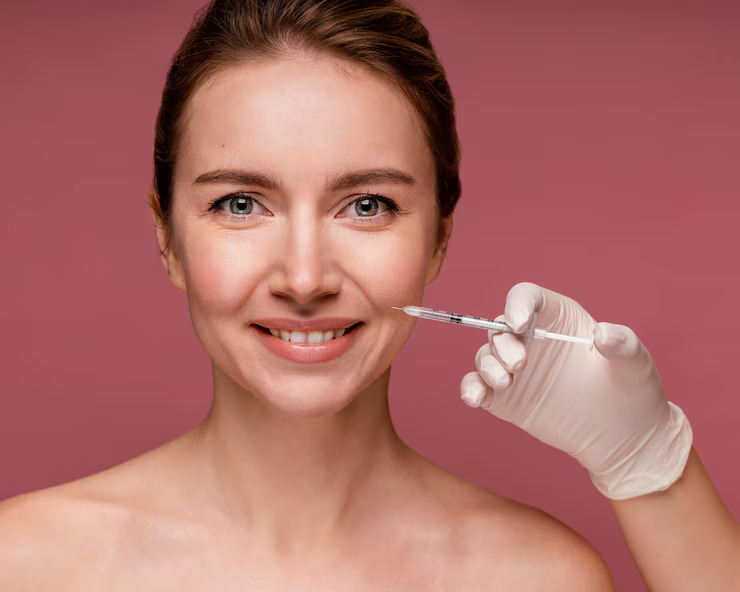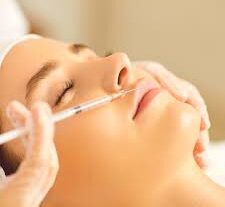What is Botox?
Botox is a brand name for botulinum toxin, a neurotoxic protein produced by the bacterium Clostridium botulinum. While it may sound intimidating, Botox has been safely used in both medical and cosmetic applications for decades.

How Does Botox Work?
Botox works by inhibiting the release of acetylcholine, a neurotransmitter that signals muscle contraction. When injected into specific muscles, Botox temporarily relaxes them, which smooths out wrinkles and fine lines. The effects typically last between three to six months, after which the muscles regain their activity, and the wrinkles reappear if no further treatment is done.
Common Uses of Botox
– Forehead lines: Smooths horizontal lines across the forehead, providing a more relaxed appearance.
– Crow’s feet: Reduces the appearance of wrinkles around the eyes, giving a more youthful look.
– Frown lines: Also known as “11” lines, these are the vertical lines between the eyebrows that soften with Botox.
– Other areas: Botox can also be used for neck bands, lip lines, chin dimpling, and even to reduce excessive sweating (hyperhidrosis).
What are Dermal Fillers?
Dermal fillers are injectable treatments designed to add volume, smooth lines, and enhance facial contours. Unlike Botox, which relaxes muscles, fillers work by physically filling in the areas under the skin.
Types of Dermal Fillers
- Hyaluronic Acid (HA) Fillers: These are the most common types of fillers. Hyaluronic acid is a naturally occurring substance in the skin that keeps it hydrated and plump. Popular brands include Juvederm, Restylane, and Belotero.
- Calcium Hydroxylapatite: This mineral-like compound found in human bones is used in fillers like Radiesse, which are effective for deeper lines and adding volume to areas like the cheeks.
- Poly-L-lactic Acid: A synthetic substance that stimulates collagen production over time. Sculptra is a well-known brand, and its effects can last up to two years.
- Polymethylmethacrylate (PMMA): These semi-permanent fillers contain tiny beads that remain under the skin, providing long-lasting support. Bellafill is a common brand.
How Do Fillers Work?
Fillers are injected beneath the skin to restore volume lost through aging or to enhance facial contours. They can address various concerns, from plumping thin lips to lifting sagging cheeks. The results are immediate and can last from six months to two years, depending on the type of filler and the area treated.
Common Uses of Fillers
– Plumping thin lips: Adds volume and defines the shape, resulting in fuller lips.
– Enhancing shallow contours: Fillers can augment the cheeks, jawline, and temples for a more sculpted look.
– Soften facial creases: Address nasolabial folds (lines from the nose to the mouth) and marionette lines (lines from the mouth to the chin).
– Improving the appearance of recessed scars: Particularly effective for acne scars, making the skin surface smoother.
Benefits of Botox and Fillers
- Non-surgical: No incisions or general anesthesia is required, making the procedures less risky and more accessible.
- Quick procedures: Treatments are often completed within 30 minutes, making them convenient for busy schedules.
- Minimal downtime: Little to no recovery time is needed, allowing patients to resume normal activities almost immediately.
- Temporary effects: Provides flexibility to adjust treatments as preferences or needs change.
- Natural-looking results: When performed by a skilled practitioner, the enhancements can look subtle and natural.
The Procedure: What to Expect
Consultation
Your journey begins with a consultation. During this session, you’ll discuss your goals and medical history with your practitioner. They will assess your facial anatomy and recommend the most suitable treatment plan.
Preparation
Before the procedure, the treatment area will be thoroughly cleaned. A numbing cream or local anesthetic may be applied to minimize discomfort.
The Injection Process
– Botox: Using a fine needle, Botox is injected into specific muscles. The number of injections required depends on the areas being treated.
– Fillers: Similarly, fillers are injected into targeted areas beneath the skin. The practitioner may massage the area to ensure even distribution and optimal results.
Post-Treatment Care
After the treatment, you will receive specific aftercare instructions. These may include avoiding strenuous activity, not lying down for a few hours, and avoiding excessive sun or heat exposure.
Potential Side Effects
Both Botox and fillers are generally safe when administered by experienced professionals. However, potential side effects can occur. Understanding these side effects can help you make an informed decision and prepare for your treatment.
Botox Side Effects
– Temporary Bruising and Swelling: The most common side effect is minor bruising and swelling at the injection site. This usually resolves within a few days.
– Redness and Irritation: Some patients may experience redness and slight irritation at the injection site, which typically subsides quickly.
– Headaches: A small number of patients report headaches after Botox injections, but these are generally mild and temporary.
– Drooping Eyelids or Eyebrows: In rare cases, the Botox can spread to adjacent muscles, causing temporary drooping of the eyelids or eyebrows. This side effect usually resolves within a few weeks.
– Flu-like Symptoms: Some individuals might experience flu-like symptoms, such as fatigue, mild fever, and muscle aches, shortly after the injections.
– Dry Mouth or Dry Eyes: Some patients report dry mouth or dry eyes, which are generally mild and temporary.
Fillers Side Effects
– Bruising and Swelling: Like Botox, bruising and swelling at the injection site are common with fillers and typically resolve within a week.
– Redness and Tenderness: The treated area may be red and tender to the touch for a few days.
– Lumps or Bumps: Occasionally, patients may feel small lumps or bumps under the skin, which can usually be massaged out by the practitioner or will dissolve on their own.
– Allergic Reactions: Although rare, some individuals may have an allergic reaction to the filler material, resulting in prolonged redness, swelling, and discomfort.
– Infection: There is a minor risk of infection at the injection site. Following aftercare instructions can help minimize this risk.
– Vascular Complications: In rare cases, fillers can block a blood vessel, leading to skin damage or, in severe cases, vision loss if injected near the eyes. This is why it’s crucial to have treatments performed by an experienced practitioner.
Choosing a Qualified Practitioner
The success of Botox and filler treatments largely depends on the skill and experience of the practitioner. Here are some tips for choosing the right professional:
- Credentials: Ensure the practitioner is certified and licensed in cosmetic dermatology or plastic surgery.
- Experience: Look for a practitioner with extensive experience in administering Botox and fillers.
- Reviews and Testimonials: Read reviews and seek recommendations from previous patients.
- Before-and-After Photos: Reviewing before-and-after photos of previous patients can give you an idea of the practitioner’s skill and the results you can expect.
- Consultation: Schedule a consultation to discuss your goals and assess the practitioner’s approach and expertise.
- Hygiene and Safety Standards: Ensure the clinic adheres to high standards of hygiene and safety protocols.
- Comfort and Communication: Choose a practitioner who makes you feel comfortable and is willing to answer all your questions thoroughly.
Latest Advancements and Trends
The field of cosmetic treatments is continuously evolving. Some of the latest advancements and trends include:
– Micro-Botox: A technique that uses smaller doses of Botox injected more superficially into the skin to improve texture and minimize pores.
– Combination Treatments: Using a mix of Botox, fillers, and other treatments like laser therapy for more comprehensive rejuvenation.
– Longer-Lasting Fillers: New formulations that provide longer-lasting results, reducing the need for frequent touch-ups.
– Natural-Looking Results: A shift towards subtle enhancements that emphasize natural beauty rather than dramatic changes.
– Customized Treatment Plans: Personalized treatment plans tailored to individual needs and goals.
– Advanced Injection Techniques: New injection techniques that enhance precision and minimize discomfort.
Conclusion
Botox and fillers offer effective solutions for achieving a youthful and rejuvenated appearance without surgery. Understanding the differences between these treatments, their benefits, and what to expect can help you make informed decisions about your cosmetic goals. Always consult with a qualified professional to ensure the best outcomes and maintain timeless beauty.
Final Tips
– Research: Understand the procedures and choose a reputable clinic.
– Realistic Expectations: Discuss what is achievable with your practitioner.
– Follow-Up: Maintain regular appointments for optimal results.
– Stay Informed: Keep up with the latest advancements and trends in cosmetic treatments to make the best choices for your beauty needs.
– Aftercare: Follow all post-treatment care instructions to minimize side effects and ensure the best results.
By staying informed and working with a qualified practitioner, you can achieve and maintain a timeless, beautiful appearance that reflects your inner vitality and confidence.

